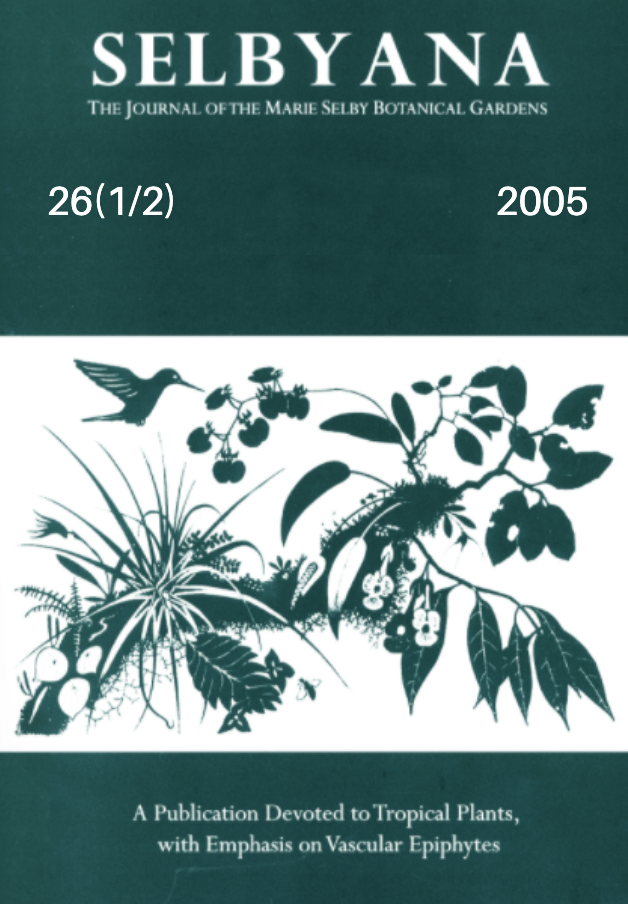Abstract
We investigated the pollination biology of a rare endemic lady's slipper orchid, Cypripedium fasciculatum, in southwestern Oregon from 1998 to 2001. In 1999, a parasitic wasp (Order Hymenoptera, Family Diapriidae, Cinetus sp.) was identified as the pollinator. Understanding the relationship between pollinator activity and floral development is imperative to successfully protect rare plants. We report here on our efforts to characterize the floral phenology of C. fasciculatum and to determine the relationship between pollinator activity and C. fasciculatum anthesis and fruit set. During the 1998—2001 period, we monitored 916 C. fasciculatum flowers in three sites for selected floral events from emergence to fruit set and monitored pollinator activity in the vicinity of the orchid sites using sticky traps. Pollinator activity and fungus gnat (sciarids and mycetophilids) activity, the host insect of the pollinator, was calculated by determining the number caught per trap per day across field sites and years. Our research characterized the floral phenology of C. fasciculatum to six distinct stages, with anthesis occurring in stage 2 and 3. Anthesis in C. fasciculatum was synchronized with peak diapriid activity as well as peak fungus gnat activity. When diapriid activity was low, then fruit set was low, although the correlation was not significant. A marginal negative correlation was found between diapriid activity and the duration of anthesis. Fungus gnats, particularly sciarids, were the major component of the insect fauna in the sites. Female diapriids were the only insects found vectoring the pollinia of C. fasciculatum. We believe the non-rewarding C. fasciculatum flowers emit odors that mimic the odor of fungus gnats luring female diapriids to enter a flower in search of a host to parasitize. Trapped diapriids encounter the stigma of C. fasciculatum en route to the small posterior opening in the labellum where the pollinia is deposited as the diapriid exits.
Open Access and Copyright Notice
Selbyana is committed to real and immediate open access for academic work. All of Selbyana's articles and reviews are free to access immediately upon publication. There are no author charges (APCs) prior to publication, and no charges for readers to download articles and reviews for their own scholarly use. To facilitate this, Selbyana depends on the financial backing of the Marie Selby Botanical Gardens, the hard work and dedication of its editorial team and advisory board, and the continuing support of its network of peer reviewers and partner institutions.
Authors are free to choose which open license they would like to use for their work. Our default license is the Creative Commons Attribution-NonCommercial 4.0 (CC BY-NC 4.0). While Selbyana’s articles can be copied by anyone for noncommercial purposes if proper credit is given, all materials are published under an open-access license with authors retaining full and permanent ownership of their work. The author grants Selbyana a perpetual, non-exclusive right to publish the work and to include it in other aggregations and indexes to achieve broader impact and visibility.
Authors are responsible for and required to ascertain that they are in possession of image rights for any and all photographs, illustrations, and figures included in their work or to obtain publication or reproduction rights from the rights holders. Contents of the journal will be registered with the Directory of Open Access Journals and similar repositories. Authors are encouraged to store their work elsewhere, for instance in institutional repositories or personal websites, including commercial sites such as academia.edu, to increase circulation (see The Effects of Open Access).
